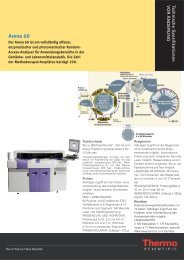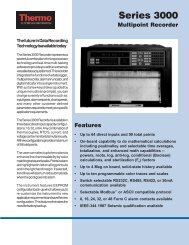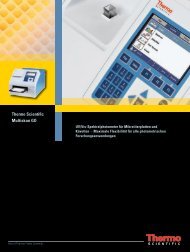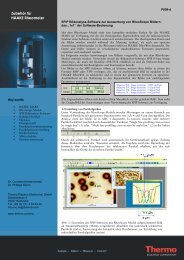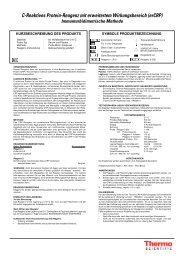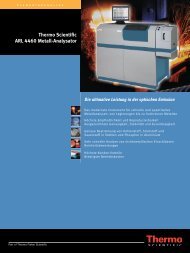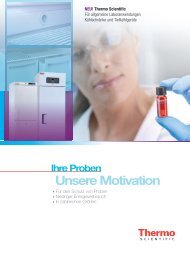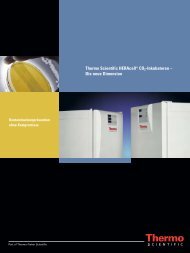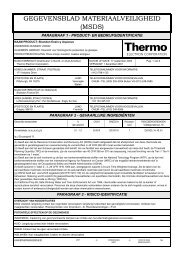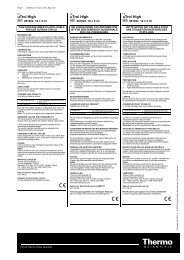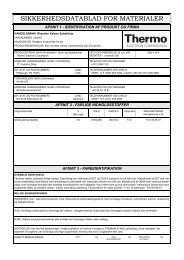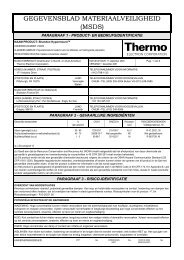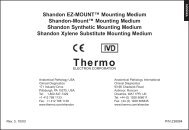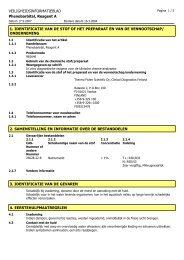Orion 2117HL High Level Chloride Analyzer User Guide
Orion 2117HL High Level Chloride Analyzer User Guide
Orion 2117HL High Level Chloride Analyzer User Guide
Create successful ePaper yourself
Turn your PDF publications into a flip-book with our unique Google optimized e-Paper software.
Calibration<br />
Flow Cell Operation<br />
Figure IV-1<br />
Recommendations<br />
Thermo Scientific <strong>Orion</strong> <strong>2117HL</strong> <strong>High</strong> <strong>Level</strong> <strong>Chloride</strong> <strong>Analyzer</strong> <strong>User</strong> <strong>Guide</strong><br />
The sample reservoir in the flow cell, as shown in Figure IV-1, has two<br />
sample volumes: a normal operation volume of 20 mL and a highly<br />
accurate and individually calibrated flow cell volume of approximately<br />
95 mL. The lower volume results in fast system response while online, and<br />
the higher volume ensures accuracy in calibration.<br />
Calibration <strong>Level</strong><br />
Measure <strong>Level</strong><br />
Flow Cell Block<br />
REF<br />
When the Thermo Scientific <strong>Orion</strong> <strong>2117HL</strong> chloride analyzer is first<br />
commissioned, it is advisable to flush out the fluidics system overnight<br />
prior to the initial calibration and use. The electronics need not be turned<br />
on at this time. Refer to Chapter IV, Rinsing the Flow Cell.<br />
• For accurate volume displacement install the chloride sensing<br />
electrode, reference electrode and ATC probe in their respective flow<br />
cell cap ports. Refer to Chapter II, Installation of a New <strong>Chloride</strong><br />
Electrode, Chapter II, Installation of the ATC probe and Chapter II,<br />
Installation of a New Reference Electrode.<br />
• Close the calibration port.<br />
TEMP<br />
Sense<br />
Calibration Port<br />
• When rinsing the flow cell before a standard calibration, be sure to<br />
rinse off the inside of the reservoir lid with deionized water to prevent<br />
buildup of chloride contamination along the lid.<br />
• To ensure that the analyzer achieves stability and minimizes interference<br />
during calibration, the operator should minimize activity on the system<br />
during calibration.<br />
IV-2



